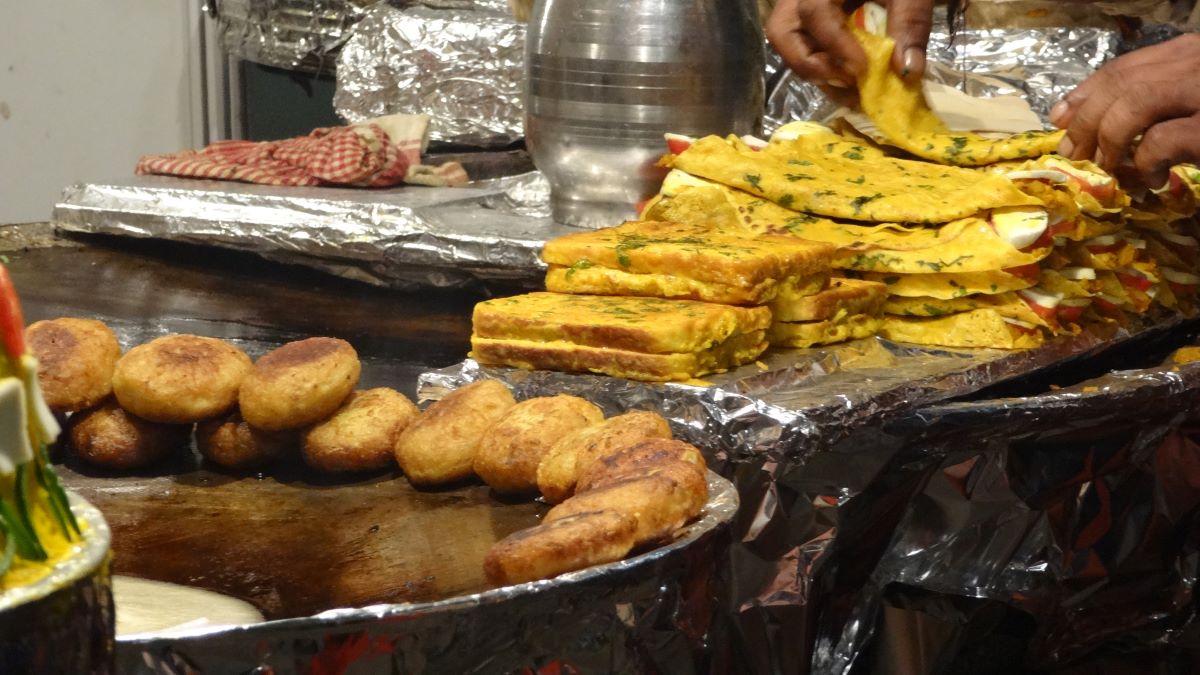Household consumption expenditure data throws up divergence in food preferences between Kerala and Tamil Nadu.
Published Feb 22, 2025 | 7:00 AM ⚊ Updated Feb 22, 2025 | 7:00 AM

Street food. (Wikimedia)
Synopsis: For rural households in Kerala, over 23% of food budget dedicated to eggs, fish, meat; in Tamil Nadu, nearly 30% of rural food budget is spent on processed foods.
The Household Consumption Expenditure Survey (HCES) 2023-24, reveals striking dietary trends across South India, highlighting regional differences in food preferences.
Kerala leads in protein and fruit consumption, while Tamil Nadu shows a growing reliance on processed foods and beverages.
The findings, segmented into rural and urban sectors, demonstrate the influence of cultural, geographical, and economic factors on dietary choices.
Kerala’s coastal geography and cultural affinity for non-vegetarian diets are evident in its expenditure patterns.
Rural households allocate 23.33% of their total food budget to eggs, fish, and meat — the highest among all Indian states.
Urban Kerala follows closely at 21.30%.
Additionally, the state leads in fruit consumption, with 10.94% of rural food expenditure and 12.41% in urban areas dedicated to fresh and dry fruits, highest in the country as well.
This contrasts with Tamil Nadu, where fruit consumption is notably lower (8.98% rural, 9.84% urban), suggesting dietary variations between the two states.
Tamil Nadu has the highest expenditure on beverages and processed foods, a trend consistent across both rural and urban populations.
Rural households spend 29.89% of their food budget on this category, while urban populations allocate even more at 34.30% — the highest in India.
This shift toward convenience foods reflects rapid urbanisation and changing lifestyles.
Karnataka and Telangana also show significant urban processed food expenditures (33.23% and 33.63%, respectively), though they trail Tamil Nadu.
Andhra Pradesh and Telangana maintain cereal-heavy diets, particularly in rural areas.
Telangana’s rural households dedicate 11.87% of their food budget to cereals — the highest in the region — followed by Andhra Pradesh at 10.25%.
Urban areas reflect a similar pattern but with slightly lower percentages.
Both states also prioritise dairy consumption, with 15.21% of urban food spending in Andhra Pradesh allocated to milk products — the highest in the region.
This suggests a strong preference for traditional diets despite modernisation trends.
“Interestingly, within the realm of food items, the healthier options seem to be decreasing, while there is a significant rise in the consumption of beverages and processed foods, nearly tripling over the span of 23 years from 1999-00 to 2023,” Indian Medical Association Telangana unit spokesperson Dr Kiran Madala told South First.
He said that this surge in processed food consumption was linked to the alarming rise in non-communicable diseases (NCDs), as indicated by recent surveys.
Notably, diabetes has surged by almost 30 percent from before to after the Covid-19 pandemic, emphasising the concerning growth in NCDs.
The correlation between this increase and the rise in fast food and beverage consumption was evident.
“This phenomenon is particularly noteworthy in rural areas, where the consumption of fast food is unexpectedly high. Despite initial assumptions that rural consumption might be lower than consumption in urban areas, the report reveals that rural consumption of fast food is nearly on par with urban areas,” noted Dr Madala.
The survey also reveals notable differences in food and non-food spending between rural and urban households across South India.
Kerala’s rural households spend the least on food (40.32%), directing more towards healthcare and transport.
Urban Kerala follows a similar trend, with 63.45% of expenditure going to non-food categories like education and consumer services.
Kerala leads in medical expenses, with rural households spending 6.66% on non-hospitalisation medical costs — nearly double Karnataka’s 3.34%.
Urban Tamil Nadu and Karnataka face high rent expenses, with 9.86% and 11.98% of total expenditure allocated to housing.
The National Sample Survey Office (NSSO), under the Ministry of Statistics and Programme Implementation (MoSPI), has released the findings of the Household Consumption Expenditure Survey (HCES) for 2023-24.
This survey, an essential part of the National Sample Survey (NSS) framework, provides critical insights into the economic well-being and consumption patterns of households across India.
The data collected is crucial for assessing living standards and formulating macroeconomic indicators such as the Consumer Price Index (CPI) and Gross Domestic Product (GDP).
The survey highlights stark regional variations in MPCE across different states and union territories.
These figures are significantly higher than the national averages of ₹4,122 for rural and ₹6,996 for urban areas.
The survey also provides a detailed breakdown of household expenditure patterns. In rural India, food accounts for 47% of total household spending.
Among food items, beverages, refreshments, and processed food constitute the highest share at 9.84%, followed by milk and milk products at 8.44% and vegetables at 6.03%.
Expenditure on cereals and cereal substitutes stands at 4.99%.
Among non-food items, conveyance holds the largest share at 7.59%, followed by medical expenses at 6.83%, clothing, bedding, and footwear at 6.63%, and durable goods at 6.48%.
In urban India, food comprises 40% of total household expenditure, while non-food items account for 60%.
The highest spending on food is in beverages, refreshments, and processed food at 11.09%, followed by milk and milk products at 7.19% and vegetables at 4.12%. Non-food expenses are led by conveyance, which contributes 8.46%, followed by miscellaneous goods and entertainment at 6.92%, durable goods at 6.87%, and rent at 6.58%.
The urban-rural gap in MPCE has declined from 71% in 2022-23 to 70% in 2023-24, signaling a trend towards greater economic parity between urban and rural areas.
Consumption inequality has also shown a decline across 18 major states.
(Edited by Rosamma Thomas)
